How to make gathers using a sewing machine
An overlock machine has a convenient gathering attachment, but you can also easily make gathers with a regular straight stitch sewing machine!

First, sew 7mm from the edge of the fabric where you want the gathers.
At this point, set the upper thread tension on the sewing machine to a low setting. Since the gathers are created by pulling the bobbin thread, loosening the upper thread tension makes it easier to pull.
Set the stitch length to about 3.5 to 4 mm.
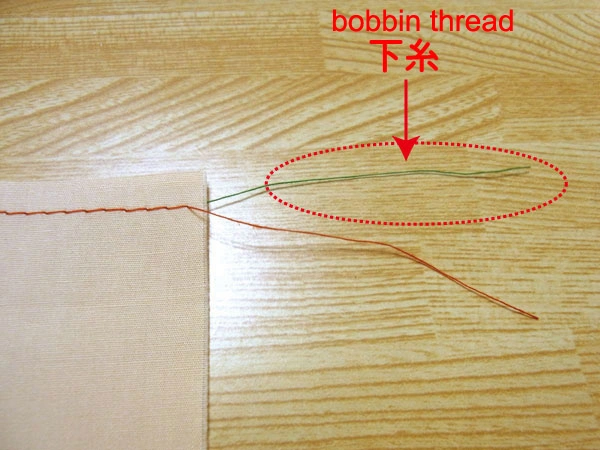
For clarity, I used different colors for the upper and bobbin threads. The green thread is the bobbin thread.
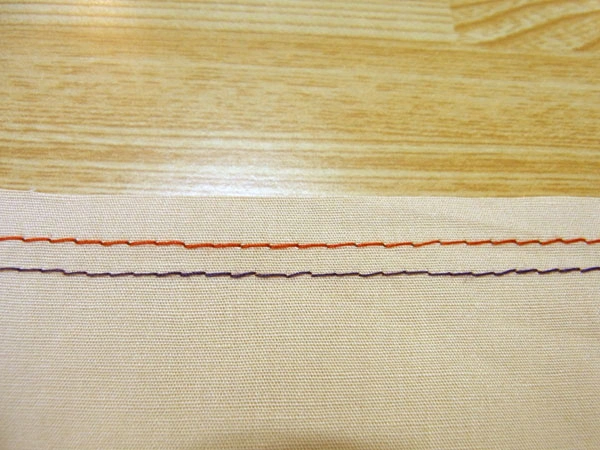
Sew another line 3mm below the first one. Having two lines makes the gathers neater and more stable.
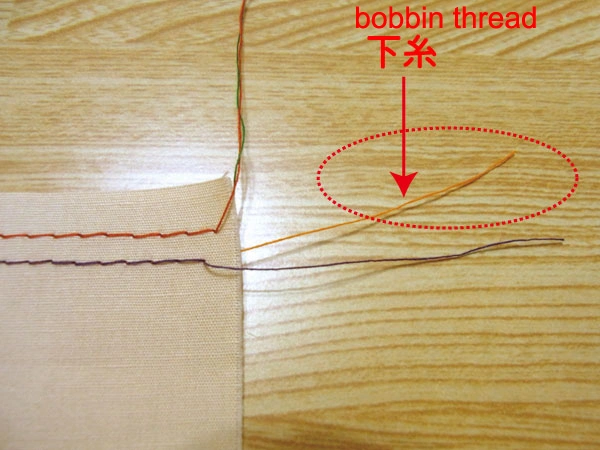
The yellow thread here is the bobbin thread.
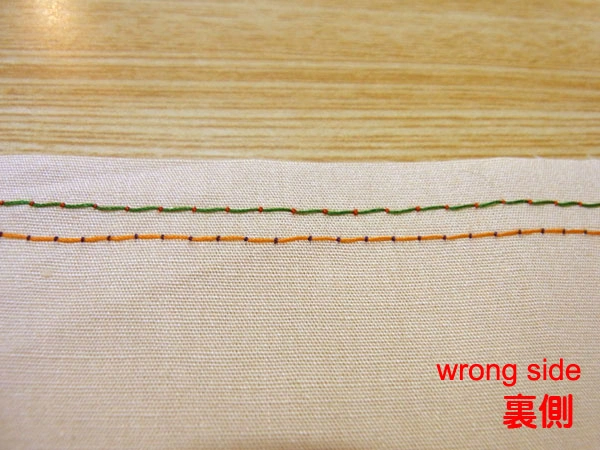
Now that the gathering stitches are in place, check the wrong side of the fabric.
Because the upper thread tension was loosened, some of the top thread shows on the back. This is fine, as it allows you to pull the bobbin thread smoothly.
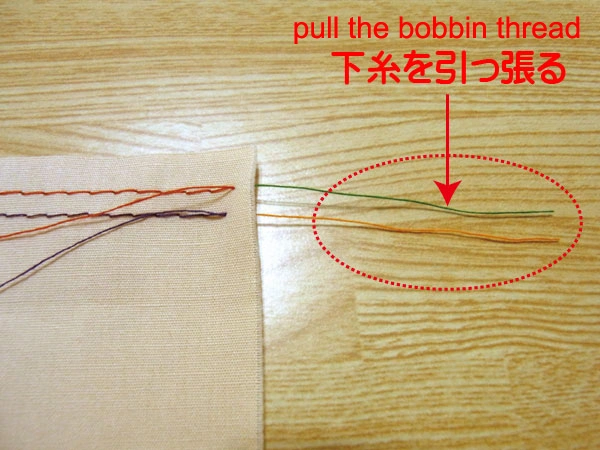
Be sure to pull only the bobbin thread, not the upper thread. Pull both bobbin threads together.
If you accidentally pull the upper thread, the seam will tighten and you won’t be able to pull the bobbin thread.
So be careful not to pull the UPPER THREAD!
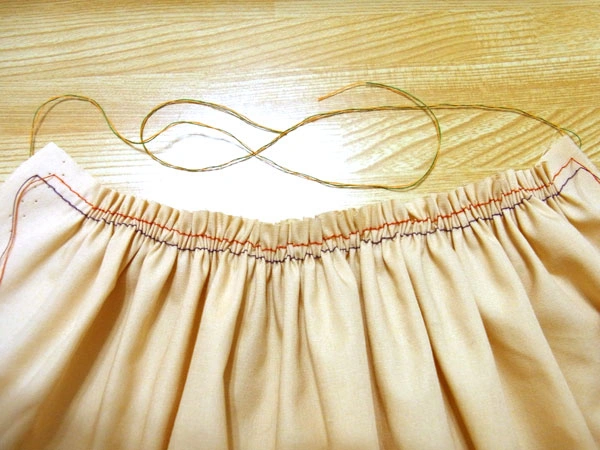
Pull the bobbin threads from both ends to create even gathers.
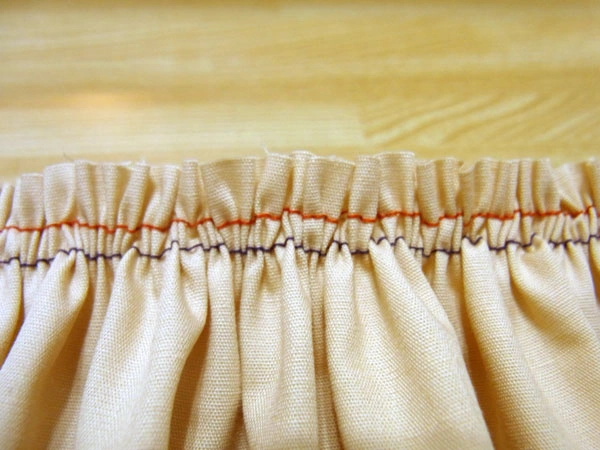
Here’s a close-up. Two rows of stitching make the gathers more secure.
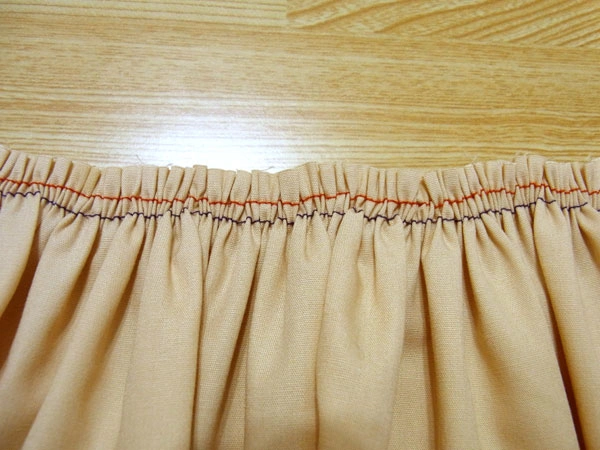
Gathered areas can look puffy and uneven, so lightly press them with an iron to settle the fabric.
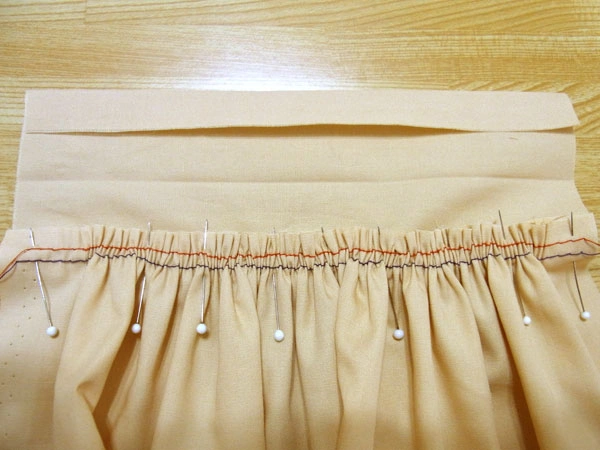
For this sample, I’ll sew the gathered fabric as if it were a belt. The seam allowance for the gathered area is 1.5 cm.
If your seam allowance is 1 cm, sew the first gathering line 3 mm from the fabric edge.
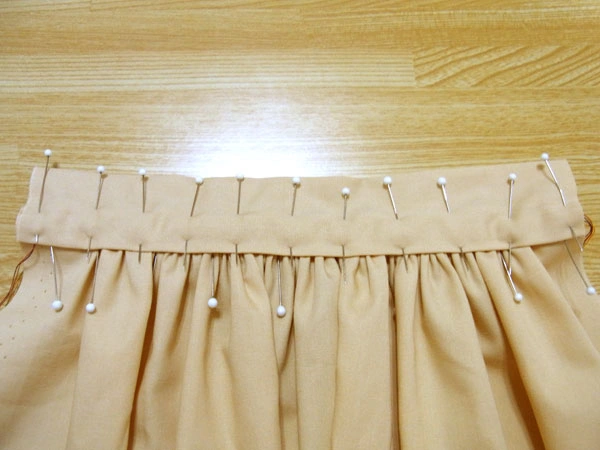
Gathering makes the fabric much thicker. When sewing belts, cuffs, and similar pieces, use plenty of marking pins to secure the fabric.
While sewing, take care that the weight of the gathered fabric doesn’t pull on the stitches.
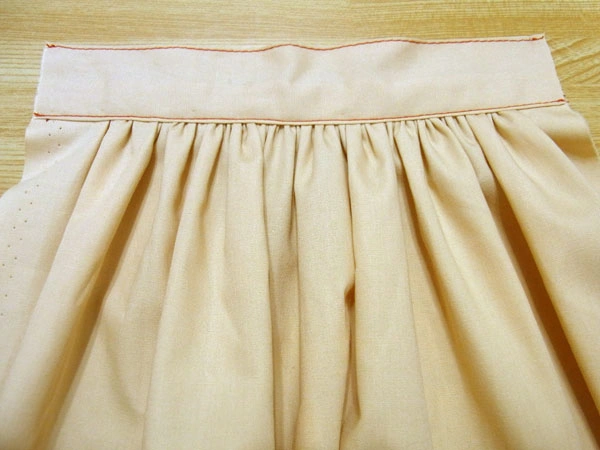
The belt is now sewn on.
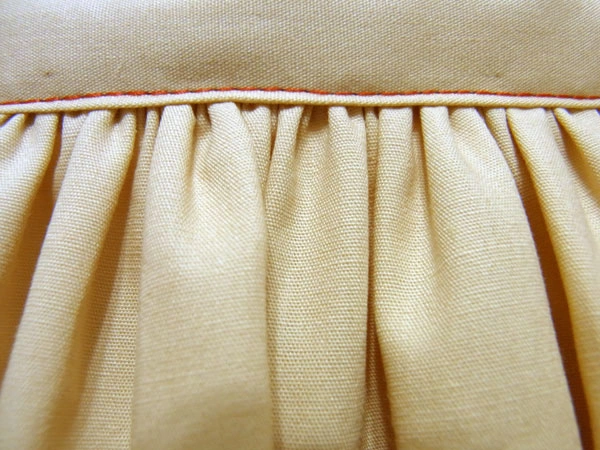
Here’s a close-up showing the neat gathers. This concludes how to make gathers using a sewing machine.